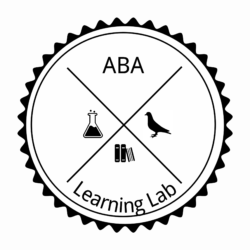Lauren DeClaire, M.A., BCBA
So, your loved one was just diagnosed with Autism. You have limited resources and very few options in terms of where to go, who to go to, and what to do. When choosing the appropriate treatment provider, treatment setting and overall treatment solution for an individual with developmental disabilities or autism, it can be difficult to know who to count on to be providing you with the accurate information
What is evidence based practice? How can you tell whether someone is implementing evidenced based procedures? How do you know that an eclectic therapy approach is better, worse, or equal to a strictly ABA approach? Should we choose to do center based or in- home therapy? Or do I just go with what I can get since we have been waiting so long for services and we need help ASAP!
Resources can sometimes be limited for parents and it is up to the field of Applied Behavior Analysis to disseminate the appropriate information to parents, educators, doctors, etc. So let’s tackle one of the above problems at a time… Center based or in-home therapy?
Advantages of center based therapy
Socialization–Clients have the ability to work on social goals such as peer manding, parallel play, peer imitation and group responding.
When working in the center you have an area that is sometimes set up to model something similar to a day in an educational setting. For example, an individual may work on programs, go to snack, have frequent breaks, go to group time, then go to lunch. This can be advantageous when a client is working towards transitioning to a mainstream education classroom and will need to get such routines established within his or her repertoire.
Disadvantage of center based therapy
Family Training– Training the parents or guardian on a Behavior Treatment Plan can be a little more difficult.
Generalization– In addition, some behaviors established within a center-based setting may not generalize across settings (from center to home) or across people (from technicians to parent/guardian). You also may experience behavioral contrast when attempting to decrease a specific behavior that then seems to increase in frequency when the individual is within their home environment.
Advantages of in-home therapy
Family Training– More family involvement is probably the number one advantage in conducting in home ABA therapy. The technician and BCBA get frequent contact with the parents or guardians and the parents are able to observe the technician implementing the treatment plan on a daily basis. This also allows the practitioner to observe the individual in their natural environment, as well as observe interactions between client, parents, siblings etc.
Disadvantages of in home therapy
Socialization– Receiving ABA therapy in your home environment provides a lot of advantages. However, one skill that your child may not be able to work on as much would be social skills with peers. In the home, you may have less exposure to opportunities to work on socialization programs as well as group skills programs.
Scheduling—Having a parent dedicate 25-40 hours a week and be home for 90% of those hours can be difficult. ABA is a time-consuming therapy that requires hard work and dedication on everyone’s part!
When it comes down to making a conclusion in terms of what is best for a client. It is always important to keep the families and the client’s goals in mind. As a BCBA we have the responsibility to help families make the best decision. At times, this decision may be a mixture of both in home and center based. Or may involve starting with in-home then transitioning to center. Or vice-versa.

